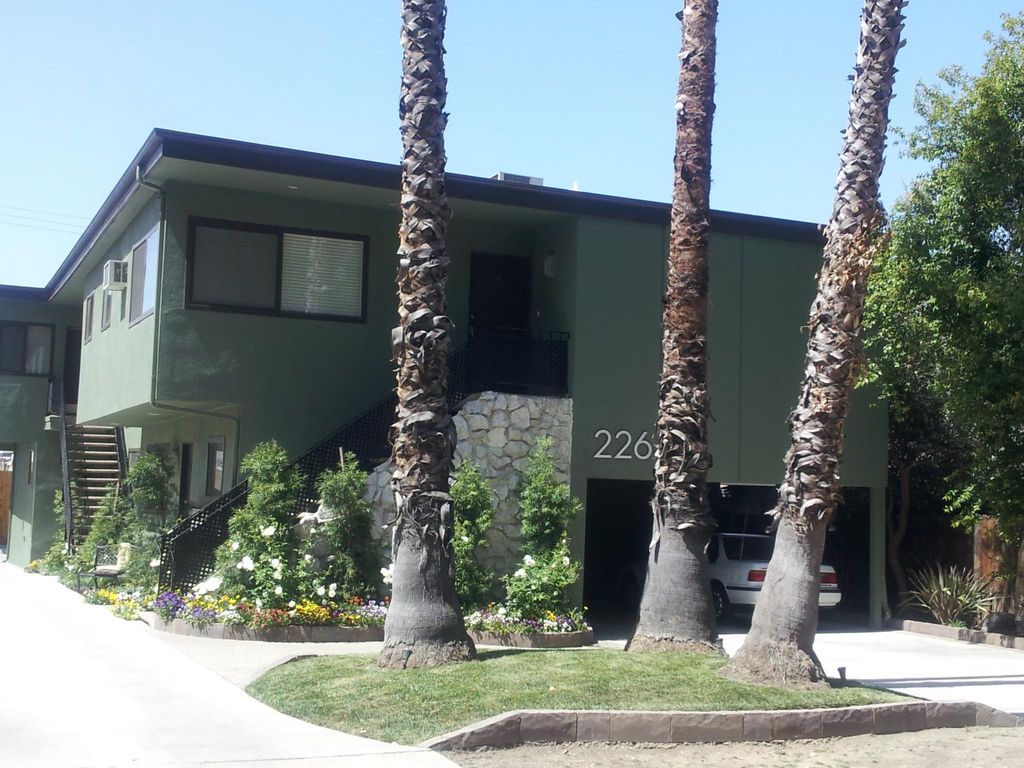Granada Hills/Porter Ranch Water Incident Update #5 August 7, 2025 – AM Update – LADWP News

Report on Water Service Disruption and Restoration Efforts in Porter Ranch and Granada Hills
Incident Overview and Impact on Sustainable Development Goal 6
A significant disruption to water services is currently affecting the communities of Porter Ranch and Granada Hills following a critical infrastructure failure. On Tuesday, August 5th, a valve controlling water flow from a 10-million-gallon tank to a 54-inch diameter trunkline broke during maintenance operations. This failure has resulted in a complete loss of water service or significantly low water pressure for residents and businesses in the area, directly impacting the achievement of Sustainable Development Goal 6 (SDG 6), which aims to ensure the availability and sustainable management of water and sanitation for all.
In response, the Los Angeles Department of Water and Power (LADWP) has initiated comprehensive repair and community support protocols. A Boil Water Notice was issued on Wednesday as a critical public health precaution, aligning with SDG 3 (Good Health and Well-being) by safeguarding residents from potential waterborne contaminants while the system is compromised.
Operational Response and Infrastructure Resilience (SDG 9 & SDG 11)
Repair and Restoration Strategy
LADWP crews are engaged in a 24/7 operation to address the infrastructure failure, a key component of maintaining resilient infrastructure (SDG 9) and sustainable communities (SDG 11). The repair process is complex due to the valve’s location more than 20 feet below ground, obstructed by other utility lines and geological challenges. The operational response is twofold:
- Permanent Repair: Excavation is underway to access and replace the broken 54-inch valve. This effort is critical for the long-term resilience of the water distribution network.
- Temporary Rerouting: To expedite service restoration, crews are simultaneously working to install temporary pumps to route water from an alternative supply into the affected trunkline. This adaptive strategy aims to mitigate the immediate impact on the community.
To restore system pressure, personnel are conducting “bleeding air” procedures from fire hydrants throughout the affected neighborhoods. This technical process is essential for refilling the water mains and restoring normal service conditions.
Public Cooperation for System Recovery
To support these technical efforts and accelerate the restoration of water pressure, a public appeal has been made for all customers in the affected zone to cease all use of tap water. Conserving water is paramount to allow the system’s pipes and tanks to refill efficiently. This collective action directly supports SDG 6.4 by promoting water-use efficiency during a critical period.
- Mandatory Conservation: Residents are instructed not to use tap water for drinking, cooking, or sanitation.
- Irrigation Suspension: All outdoor watering, including sprinklers for lawns and gardens, must be turned off immediately.
Community Support and Social Equity (SDG 3, SDG 6, SDG 10)
Distribution of Essential Resources
To address the immediate health and sanitation needs of the affected population, LADWP has established support centers, directly contributing to SDG 3 and SDG 6. These centers provide essential services to maintain public health and well-being during the outage.
- Holleigh Bernson Memorial Park (20500 Sesnon Blvd, Porter Ranch):
- Potable bottled water distribution
- Non-potable water tankers for irrigation/non-drinking uses
- Portable restrooms and showers
- Mobile laundry units
- O’Melveny Park (17300 Sesnon Blvd., Granada Hills):
- Potable bottled water distribution
- Non-potable water tankers
- Portable restrooms
- Intersection of Tampa Ave. and Sesnon Blvd.:
- Potable bottled water distribution
- Non-potable water tankers
Ensuring Inclusive Support and Reducing Inequalities (SDG 10)
In alignment with SDG 10 (Reduced Inequalities), special provisions have been made to ensure that vulnerable populations are not disproportionately affected. LADWP is collaborating with partner agencies to deliver water directly to seniors and individuals with disabilities or functional needs who cannot access the distribution centers. This targeted support underscores a commitment to leaving no one behind during a public service crisis.
Analysis of Sustainable Development Goals (SDGs) in the Article
1. Which SDGs are addressed or connected to the issues highlighted in the article?
-
SDG 6: Clean Water and Sanitation
This is the most central SDG to the article. The entire text revolves around a disruption in the water supply, the resulting lack of access to clean water, and the health precautions (Boil Water Notice) required for the water that is available. It directly addresses the fundamental need for safe and accessible water.
-
SDG 9: Industry, Innovation and Infrastructure
The root cause of the water crisis is an infrastructure failure—specifically, a “broken valve to a large-diameter trunkline.” The article details the complex repair efforts, highlighting the importance of maintaining “reliable, sustainable and resilient infrastructure” to ensure essential services like water supply.
-
SDG 11: Sustainable Cities and Communities
The incident affects specific urban communities, Porter Ranch and Granada Hills. The article discusses the impact on residents and businesses and the response to ensure the well-being of the population. This includes providing access to basic services (water, sanitation) and managing a localized disaster, which are key components of creating sustainable and resilient cities.
2. What specific targets under those SDGs can be identified based on the article’s content?
-
Target 6.1: By 2030, achieve universal and equitable access to safe and affordable drinking water for all.
The article directly relates to this target as it describes a situation where access to safe drinking water has been compromised. The “Boil Water Notice” explicitly addresses the lack of “safe” water, and the complete service outage for many customers highlights the disruption of “access.” The provision of bottled water is a temporary measure to meet this fundamental need.
-
Target 6.4: By 2030, substantially increase water-use efficiency across all sectors and ensure sustainable withdrawals and supply of freshwater to address water scarcity.
This target is addressed through the explicit request for water conservation. The article urges customers to “keep their taps shut” and specifically states, “Please turn off sprinklers and do not use water available at your home or business for irrigating your lawns and gardens.” This is a direct call to increase water-use efficiency during a critical supply shortage.
-
Target 9.1: Develop quality, reliable, sustainable and resilient infrastructure…to support economic development and human well-being, with a focus on affordable and equitable access for all.
The event was caused by the failure of critical water infrastructure (“a valve that controls the flow of water broke”). The extensive and complicated repair work, involving excavation “more than 20-feet below ground,” underscores the challenge of maintaining reliable infrastructure. The failure demonstrates a lack of resilience, and the round-the-clock repair efforts are aimed at restoring a reliable system.
-
Target 11.1: By 2030, ensure access for all to adequate, safe and affordable housing and basic services and upgrade slums.
Water is a fundamental basic service. The article describes how residents of Porter Ranch and Granada Hills lost this service. The response, which includes setting up “bottled water distribution sites,” “portable showers, handwashing stations, mobile laundry units, and portable toilets,” is a direct effort to provide temporary access to these essential services.
-
Target 11.5: By 2030, significantly reduce the number of people affected…by disasters, including water-related disasters…
While not a natural disaster, the infrastructure failure has resulted in a localized, water-related disaster for the affected communities. The article details the impact on the population and the emergency response measures put in place to support the “affected customers,” which aligns with the goal of mitigating the effects of such disasters on people.
3. Are there any indicators mentioned or implied in the article that can be used to measure progress towards the identified targets?
-
For Target 6.1 (Safe Drinking Water):
An implied indicator is the proportion of the population without access to safely managed drinking water services. The article provides tools to measure this, such as the “interactive map to enter your address if you need to check if the Boil Water Notice applies to you.” The existence and geographic scope of the Boil Water Notice itself serves as a direct, albeit negative, indicator of water safety.
-
For Target 9.1 (Resilient Infrastructure):
An implied indicator is the duration of the service outage due to infrastructure failure. The article provides a timeframe, stating that the “current estimate for repairs could take through this weekend to be completed.” This duration serves as a measure of the system’s resilience and the efficiency of the repair process.
-
For Target 11.1 (Access to Basic Services):
An implied indicator is the number of people requiring and receiving temporary basic services. The establishment of three “bottled water distribution sites” and the provision of amenities like “portable showers, handwashing stations, mobile laundry units, and portable toilets” for affected customers are qualitative and quantitative indicators of the scale of the service disruption and the response to it.
-
For Target 11.5 (People Affected by Disasters):
An implied indicator is the number of people affected by the water disruption. The article defines the affected population by community names (“Porter Ranch and Granada Hills”) and provides a “Map of Affected Communities.” The scale of the support operation, including special assistance for “seniors and customers with disabilities,” helps to quantify the number of people impacted.
4. Summary of SDGs, Targets, and Indicators
| SDGs | Targets | Indicators Identified in the Article |
|---|---|---|
| SDG 6: Clean Water and Sanitation |
6.1: Achieve universal and equitable access to safe and affordable drinking water for all.
6.4: Substantially increase water-use efficiency. |
– Population within the boundaries of the “Boil Water Notice” and service outage area. – Implementation of water conservation measures (e.g., request to turn off sprinklers). |
| SDG 9: Industry, Innovation and Infrastructure | 9.1: Develop quality, reliable, sustainable and resilient infrastructure. |
– Occurrence of infrastructure failure (“broken valve”). – Duration of service outage and time required for repairs (“could take through this weekend”). |
| SDG 11: Sustainable Cities and Communities |
11.1: Ensure access for all to adequate, safe and affordable basic services.
11.5: Significantly reduce the number of people affected by disasters, including water-related disasters. |
– Number of people requiring alternative basic services (bottled water, portable showers, toilets). – Number of people affected within the defined communities (Porter Ranch and Granada Hills). |
Source: ladwpnews.com

What is Your Reaction?
 Like
0
Like
0
 Dislike
0
Dislike
0
 Love
0
Love
0
 Funny
0
Funny
0
 Angry
0
Angry
0
 Sad
0
Sad
0
 Wow
0
Wow
0



























;Resize=805#)




















































